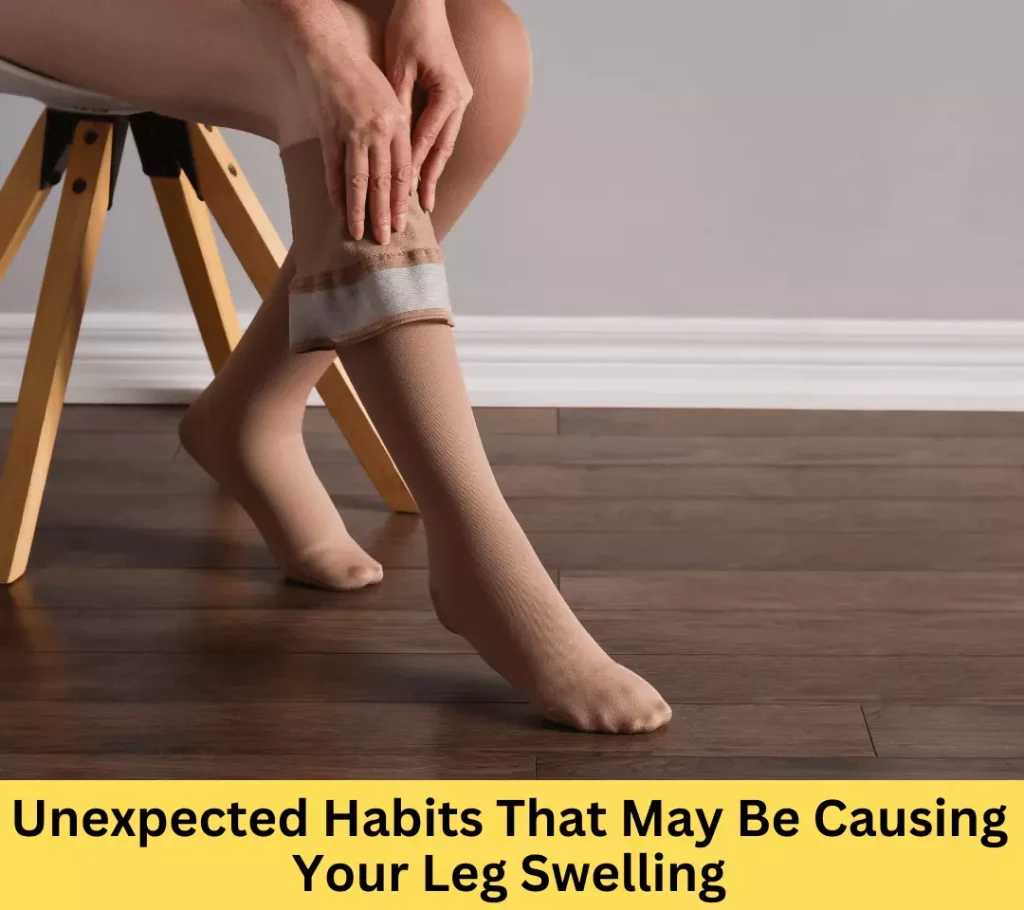Introduction
Leg swelling is a common problem, but one that many people overlook until it becomes a real issue. Unfortunately, many of the everyday habits that you may not even notice can have a significant impact on your leg swelling.
In this article, we’re going to help you identify 5 unexpected habits that may be causing your leg swelling. Learn about leg swelling causes, when to seek medical attention, the link between sodium and swollen legs, how dehydration affects your lower limbs, the impact of poor posture, and how varicose veins are connected to leg swelling.

By understanding the root causes of your leg swelling, you can take steps to reduce or even prevent leg swelling in the future. Read on to find out more!
What Causes Leg Swelling and When to See a Doctor
Leg swelling is a common problem that can have multiple causes. Inactivity, sun exposure, pregnancy, and even certain dietary choices can all contribute to swollen legs.
Leg swelling can have unexpected causes like consuming excess salt, insufficient water intake, prolonged standing or sitting, and lack of physical activity. Any of these habits can increase the risk of leg swelling.
If leg swelling persists and does not respond to lifestyle changes, it may be a sign of a more serious medical condition. If your leg swelling continues for a few days or if it’s accompanied by fever or other symptoms, contact your doctor. Additionally, if at-home methods like rest and ice packs haven’t helped, medical assistance may be necessary.
The Surprising Link between Sodium and Swollen Legs
It might come as a surprise that a common kitchen ingredient like sodium could be contributing to your leg swelling. Sodium plays an important role in fluid balance – more specifically, it helps the body retain water in our cells.
This means that too much sodium in the body can lead to more water retention and swelling. It is recommended that adults have no more than 2,300 milligrams of sodium per day, but many people are consuming much more. Eating foods with high sodium content such as frozen meals, canned soups, and processed meats can lead to an excessive sodium intake.
Take note of the sodium content of the food you’re consuming and try to limit your intake of processed and packaged foods. Aim for natural, whole foods as much as possible. Leg swelling could be an indication that you’re eating too much sodium, and it’s time to make a change!
How Dehydration Can Affect Your Legs and Feet
It may sound counterintuitive, but dehydration can actually lead to swollen feet and legs. The lack of fluids in your body can cause fluid to pool in the lower body, leading to swelling.
Plus, dehydration not only affects the amount of fluid in the body, but it can also lead to reduced circulation throughout the body. By not drinking enough water, your legs and feet may not get the proper amount of circulation to quickly break down fluids and reduce swelling.
If you’re not drinking enough fluids, you may notice a difference in your leg and foot swelling when you increase your daily water intake. As a general rule, try to drink half your body weight in ounces of water per day to properly hydrate yourself.
The Impact of Poor Posture on Leg Swelling
Did you know that one of the most common causes of leg swelling is poor posture? Staying in a seated position or standing in the same spot for too long can cause fluid to pool in your lower extremities.
This is because of gravity pulling your body down and pushing the fluids in your legs up. Over time, this can increase the swelling of your ankles and feet. It’s important to shift your posture and keep moving throughout the day to avoid leg swelling.
When sitting, try to keep your feet flat on the floor and your spine straight. This will help ease the pressure on your legs from fluid pooling. If you’re standing, be sure you don’t lock your knees, and keep your feet shoulder-width apart. Taking regular breaks to stretch and move your legs will also help.
Varicose Veins and Leg Swelling: Understanding the Connection
Varicose veins can cause unexpected leg swelling. These veins usually occur in the legs, where they appear as swollen and twisted veins on the surface of the skin. The condition is more common in women, and is most commonly seen during and after pregnancy.
Leg swelling caused by varicose veins is usually often accompanied by pain and discomfort. This swelling occurs due to pressure buildup in the veins and tends to worsen during prolonged standing or sitting.
To reduce swelling, people with varicose veins should avoid wearing tight clothes or socks and instead opt for loose-fitting, supportive items. It’s also important to stay off your feet for long periods of time and, when standing, keep your feet slightly elevated. Compression stockings can also provide relief from the pain and swelling.
If you’re experiencing varicose veins, don’t suffer in silence; visit Utah Vein Specialists for a comprehensive evaluation and personalized treatment plan.
Conclusion
Leg swelling can be a worrisome symptom, but it does not always require medical attention. Sometimes, the cause of leg swelling can be rooted in unexpected sources, such as the foods you eat and your physical habits. Spicy and fried foods, gravity, a sedentary lifestyle, and standing without moving can all be factors to keep in mind when assessing leg swelling. Taking the time to integrate these considerations into your lifestyle can help you prevent future leg swelling.



